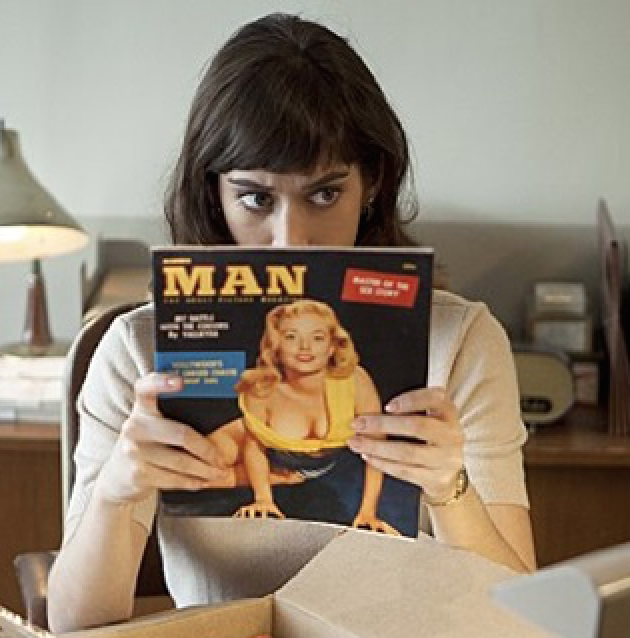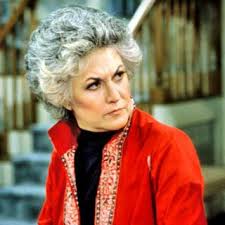 All told, 2014 was not a bad year for women in film, a fact that’s sure to be reflected in upcoming awards nominations.
All told, 2014 was not a bad year for women in film, a fact that’s sure to be reflected in upcoming awards nominations.
Reese Witherspoon and Mia Wasikowska blew us away in the travelogues “Wild” and “Tracks,” respectively. Patricia Arquette broke our hearts as the single mother in “Boyhood.” Julianne Moore channeled an Alzheimer’s-stricken professor in the haunting “Still Alice.” Tilda Swinton ruled the school in four films, as did Jessica Chastain. Ava DuVernay dazzled us with the Martin Luther King Jr biopic, “Selma.” Gillian Flynn adapted her bestselling novel Gone Girl for the big screen. Jenny Slate kept us rolling in “Obvious Child,” the funny-as-fuck “abortion comedy” written and directed by Gillian Robespierre. Lake Bell sent up adult women who talk like babies in “In a World,” which she wrote, starred in, and directed. Angelina Jolie directed “Unbroken,” the highly regarded portrait of Louis Zamperini. Amma Asante helmed the historical drama “Belle.” Gia Coppola (yes, Sofia’s niece and Francis’s granddaughter) made an admirable debut with her coming-of-ager, “Palo Alto.” With “Foxcatcher,” “Her,” and “Zero Dark Thirty” independent producer Megan Ellison continued to emerge as Hollywood’s most potent new weapon. And with the rise of girl-empowering Young Adult-centric films like “Divergent” and the “Hunger Games” films, young women were even recognized as a force to be reckoned with at the box office.
That said, despite a recent study revealing that men still dominate the small-screen landscape both on and off screen, even a great year for women in film pales in comparison to any year for women in television. Sure, we could argue that’s because TV is viewed as a domestic medium, harkening back to when ladies allegedly lounged at home with their shows while husbands earned the bacon. But here are five more-evolved reasons why TV is better for women.
Nobody pretends women aren’t funny. With the success of “Bridesmaids” and pretty much anything starring Melissa McCarthy except for “Tammy,” Hollywood is finally glomming onto the fact that audiences will turn out for female-driven comedies. But from “Lucy” to “Maude,” TV has always recognized the funny ladies – a fact reflected in this year’s Golden Globe nominations for best TV comedy. Four out of those five contenders – “Orange Is the New Black,” “Jane the Virgin,” “Girls,” and “Transparent – are overseen by female showrunners. And those shows aren’t even the funniest series with females at the helm and/or female leads; think “Broad City,” “The Mindy Project,” “New Girl,” “Portlandia,” “Veep,” and “Parks and Recreation.” (Don’t get me started on the hole that the cancellation of “30 Rock” left in my heart.) So why does the fairer sex get a fairer shake in television? One theory: Women often slip through glass ceilings by shining as writers, who in general are more highly valued in TV than in film. Here’s looking at you, Mindy Kaling and Tina Fey.
TV’s a safe haven for female directors. Let’s face it. The world of movies has a knack for chewing up and spitting out great female directors, possibly because (mostly male) studio CEOs don’t like to entrust big Hollywood budgets to women whose names aren’t Kathryn Bigelow. So even after making terrific, buzz-worthy feature films, female directors like Lisa Cholodenko (“The Kids Are Alright”), Rose Troche (“Go Fish”), Nicole Holofcener (“Enough Said”), Martha Coolidge (the very underrated “Valley Girl”), Jodie Foster (yes, that Jodie Foster), and Mary Harron (“American Psycho”) still make a lot of their cash as directors of TV shows – which benefit enormously from their involvement. Heck, even art-house director Jane Campion has recently joined the TV ranks with her beloved series “Top of the Lake.”
More TV shows pass the Bechdel Test. Many more TV shows than films easily pass the test popularized by Fun Home author Alison Bechdel: They have at least two named women who talk to each other about something besides a man. Think about it. Whether it’s the “you’re-my-personhood” of Christina and Meredith on “Grey’s Anatomy,” the platonic romance of Ann and Leslie on “Parks and Recreation,” the fiercely committed foursome of “Sex and the City,” or the besties-business partners Sookie and Lorelai of “The Gilmore Girls, sisterhood is powerful on the small screen. On the silver screen, not so much (with all respect to “Steel Magnolias,” of course), in part because films are restricted by a two-hour format rather than the multiple-episode arc of TV series. This also may be why…
Complicated isn’t just a code word for bitch. While women still mostly play appendages in movies (whores and madonnas, at your service), powerful, complex women have been the name of the game in TV ever since Candice Bergen became a single mother on “Murphy Brown.” Attorney Alicia Florrick (Julianna Margulies) of “The Good Wife” loves the dickens out of her kids but isn’t above subverting her colleagues and mother-in-law while clutching her glass of red wine. The ultimate politician’s wife, Claire Underwood (Robin Wright) is a Machiavellian menopausal woman who cares most deeply about the environment … and her murderous spouse’s job prospects. As the titular character on “Nurse Jackie,” Edie Falco plays an indispensable nurse who’s also a junkie and piss-poor parent. While Elisabeth Moss plays a generic girlfriend and wife respectively in this year’s films “Listen Up Philip” and “The One I Love,” she is the glass ceiling-breaking Peggy on “Mad Men” and a tough cop with a kind heart on Jane Campion’s brilliant “Top of the Lake.” In the sorely underrated “Masters of Sex,” Virginia Johnson (Lizzy Caplan) emerges as a sex-positive groundbreaker who’s also a poised single mom. And Frances McDormand delivers the performance of the year (in every medium) as the unhappily salty New England schoolteacher Olive Kitteridge on HBO’s eponymous series. Honestly, the list of badass female characters currently on TV series is gloriously long: Start with the female family members of that ultimate cry-smile family series, “Parenthood”; the estro-geniuses of “American Horror Story”; the wide-ranging female clones of the sci-fi series “Orphan Black” (all played brilliantly by Tatiana Maslany); the various female life forms of “True Blood.” Not to mention practically the entire cast of the heartbreaking Netflix series “Orange Is the New Black” and, of course, the gazillions of strong ladies in the Shonda Rhimes Universe. Which leads me to …
Two Words: “Oprah” and “Shonda.”  I could go on and on. Both women have profoundly changed the face of television, literally and figuratively. Shonda Rhimes currently owns Thursday night TV with “How to Get Away With Murder,” “Grey’s Anatomy,” and – oh my goddess – “Scandal.” She deserves a lifetime achievement award just for creating Olivia Pope–and Miranda Bailey, though the latter is less touted. And after remaking the entire template of the daytime talk show as well as everything about our lives from what we read to what we eat, Oprah owns her own freaking TV network. Even so, the sad truth is that the world of film still might not know what to do with either of these extraordinary women of color – which is a good indication of why Hollywood is in so much hot water right now. So let me return to my original point. Two Words: “Oprah” and “Shonda.” ‘Nuff said
I could go on and on. Both women have profoundly changed the face of television, literally and figuratively. Shonda Rhimes currently owns Thursday night TV with “How to Get Away With Murder,” “Grey’s Anatomy,” and – oh my goddess – “Scandal.” She deserves a lifetime achievement award just for creating Olivia Pope–and Miranda Bailey, though the latter is less touted. And after remaking the entire template of the daytime talk show as well as everything about our lives from what we read to what we eat, Oprah owns her own freaking TV network. Even so, the sad truth is that the world of film still might not know what to do with either of these extraordinary women of color – which is a good indication of why Hollywood is in so much hot water right now. So let me return to my original point. Two Words: “Oprah” and “Shonda.” ‘Nuff said
This feminesto was originally published in Word and Film.
